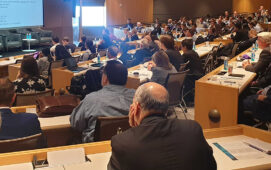
 By Paul Chambers, Xceptor.
By Paul Chambers, Xceptor.
With the UK’s move to T+1 settlement cycles expected to be a game-changer for financial markets, the UK Accelerated Settlement Taskforce has been drawing on lessons from North America’s T+1 transition.
One such lesson from across the Atlantic is that insufficient automation led to increased manual processing and exception management, putting unnecessary strain on operational efficiency. As firms gear up to transition from T+2 to T+1, the UK can mitigate these pressures by focusing on robust automation and global alignment.
Learning from North America’s Experience
North America’s T+1 transition left a mix of successes and setbacks along the way. Strong engagement from regulatory bodies such as the SEC and DTCC provided a clear roadmap and timeline for larger financial institutions, particularly tier one banks and custodians who had already invested in automation technologies. However, smaller firms struggled to adapt. Their reliance on manual processes, often due to perceived high automation costs, became deeply entrenched, limiting their ability to adapt.
The UK must avoid this scenario by ensuring automation is accessible to all market participants, including smaller firms. Industry-wide communication and collaboration will also be crucial to make the business case for automation compelling and inclusive. Without it, smaller participants could continue to fall behind, leading to widespread operational challenges during the transition.
The Essential Need for Automation
One key takeaway from the task force is the need for firms to invest in automation to handle the reduced settlement timelines of T+1.
The UK financial market is a global hub with major international investor participation, meaning that automation is essential if post-trade processes such as allocations, confirmations, and affirmations can be effectively managed. Seamless Straight-Through Processing (STP) on trade date (T0) without the need for manual intervention will be especially critical to avoid delays and minimise operational costs.
Removing manual interventions from these and other core processes must be a top priority across the industry. Many firms already operate in T+0 environments, using automation to speed up settlement cycles without compromising security or compliance. However, democratising automation is essential to ensure that all firms, regardless of size, have the tools to meet these challenges and reduce settlement risk.
Taking a Globally Aligned Approach
Global alignment is crucial as the UK’s financial markets are deeply connected to international investors, particularly from the EU and Switzerland, making synchronisation with global standards post-T+1 vital. Cross-border transactions must continue operating smoothly. Ensuring compliance across different regions will require seamless automation of processes related to Standard Settlement Instructions (SSIs) and Client Account Allocations.
By automating repetitive, low-value tasks, firms can enhance their transparency and traceability while freeing up valuable resources to focus on higher-value activities. Automated workflows also boost accuracy, with the elimination of firms’ reliance on spreadsheets and emails improving their ability to handle post-trade exceptions, ultimately enhancing overall operational performance.
Strategic Automation for Long-Term Success
Automation represents more than a short-term fix for the T+1 transition – it lays the foundation for a long-term strategic shift, enabling firms to future-proof their operations. As the UK braces for T+1, firms that adopt automation will not only experience a cleaner transition; they’ll position themselves as adaptable to future changes in global financial markets.
End-to-end automation solutions for allocation, affirmation, and confirmation flows are already helping firms meet their T+1 objectives, but the approach must extend beyond immediate compliance. To stay competitive, firms must ensure their technology infrastructure evolves in tandem with their business needs to respond swiftly to future regulatory changes and technological advancements.
The Path Forward
The shift to T+1 demands that UK firms take a long-term view of their operational models. While the task force’s recommendations provide a strong foundation, the test that really matters is the success of the execution.
Firms that invest in automation now will complete the transition more effectively, creating resilient, adaptable business models for future changes in global finance.
Subscribe to our newsletter




